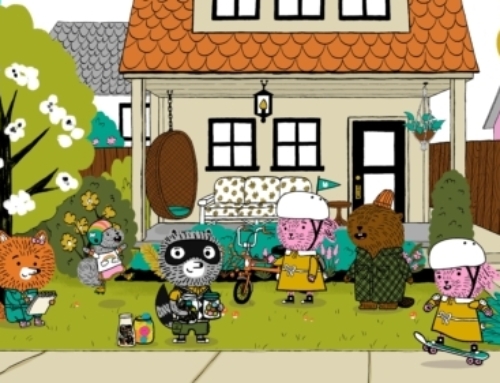If you’re trying to find solutions to help calm autism tantrums and meltdowns, then we have some of the best products and strategies in the following article!
Tantrums are never easy to deal with, especially when it happens in a crowded public place. If your child has autism, it  makes even harder to handle tantrums and even predict when they’re going to happen. In the following article, we’ll try and show you some of the differences between autism tantrums and autism meltdowns. While to an outsider they may seem the same, both are different and should be handled differently.
makes even harder to handle tantrums and even predict when they’re going to happen. In the following article, we’ll try and show you some of the differences between autism tantrums and autism meltdowns. While to an outsider they may seem the same, both are different and should be handled differently.
What’s The Difference Between a Tantrum and an Autism Meltdown?
It’s important to remember that a tantrum isn’t an autism meltdown and shouldn’t be handled in the same way. You’re going to see a lot of tantrums during the ‘terrible twos,’ and you’re going to have to handle these differently. As children grow, their minds are screaming at them to become more independent, but their ability to plan, organize and execute these ideas is somewhat limited. This often leads to tantrums. If these tantrums are ignored, they’ll usually go away, but reward them, and you’ll be doomed to see them repeated.
Autism meltdowns occur when a child is either overwhelmed or overstimulated. Often, when children become exhausted or overwhelmed, it can lead to meltdowns. In the beginning, it can be hard for parents to tell the difference between the two types of tantrums. When children with autism get too much sensory stimulation, the central nervous system can become overwhelmed. This lead to a jam of information which can’t be processed.
When children with autism experience overstimulation they’re unable to regulate their sensory inputs and their bodies perceive this as a threat to their safety. This all comes down to our bodies natural fight or flight responses.
What Can You Do When a Child with Autism Has a Meltdown or Tantrum?
Before you learn how to handle a tantrum, it’s important to understand the behavior behind the tantrum. Children are throwing a tantrum for several different reasons:
- To get your attention or any attention
- To get what he/she wants or needs
- Because what they want/need has been denied
- They have been denied access to something they want/need
Once you learn why your child is throwing a tantrum, you’ll be better equipped to understand how to treat it and move on. It’s important to follow some simple steps when handling any tantrum situation.
- Recognize The Motivation Behind The Tantrum – It’s important to understand why they’re having a tantrum, without giving in to what they want at the moment. Try to engage them in conversation and show them that you understand, but don’t give in until they have calmed down and understood.
- Reinforce Their Positive Behavior – When you notice that your child is handling small problems appropriately, then reward that behavior with praise. By rewarding positive behavior, you can build up the child’s problem-solving skills.
- Build Up Their Skills – Look for opportunities to build up children when they’re doing the right thing. Things like problem–solving, impulse control, self-soothing, and communication should all be rewarded when appropriate.
How to handle autism meltdowns in young children
Every child is different, and no two children with autism are going to react the same way. It’s impossible to have a ‘one size fits all solution to any meltdowns, but there are some strategies and tips you can utilize that may help. Some great ideas are to schedule activities, visual schedules, check–off lists, and quiet time for their child. It can even be a good idea to schedule in surprises to help your child learn how to handle unexpected situations. Along with learning how to recognize your child’s warning signs, you’ll be better prepared for a meltdown when they occur.
If you’re out and about another great idea is to have a meltdown kit ready. There are some great products available which you can easily carry around in your meltdown kit for when situations arise.
- Weighted Items – Weighted items aren’t all large and provide great assistance in dealing with any autism meltdown.
- Noise Cancelling Headphones – Often, excessive noise can play a large part in any autism meltdown. A good set of noise–canceling headphones handy is a great way to block out auditory stimulation and distraction.
- Non-Toxic Chewing Toys – If your child likes to chew their nails or clothes, then one of these chewing toys can provide a useful and calming distraction.
- Autism Fidget Toys – It’s surprising how something so simple can provide such a large amount of distraction. There are some great fidget toys for autism available.





